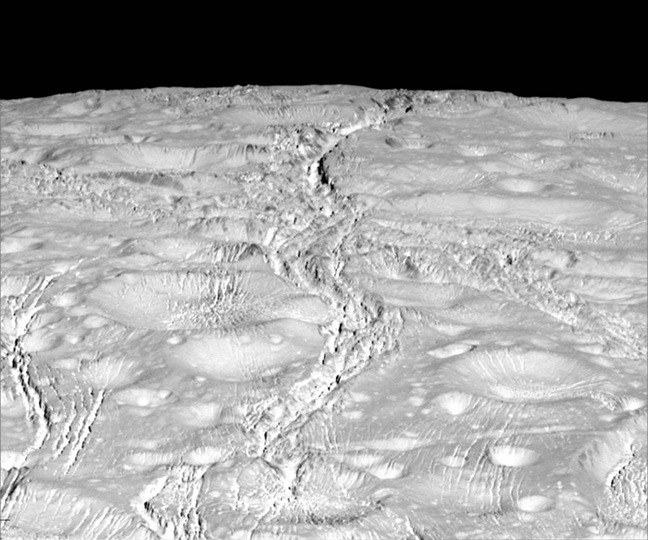This article is more than 1 year old
NASA's Cassini probe skims icy moon Enceladus
Pictures of intimate fly-by expected imminently
NASA's Cassini spacecraft yesterday made it closest approach yet to Saturn's moon Enceladus, swooping to within 49km (30 miles) of the icy body's south polar region.
In the process, it passed through the liquid plumes which spew from Enceladus, originating in its sub-surface ocean. Scientists hope a small sample of plume material will determine if the satellite has the potential to harbour life. Specifically, Cassini will determine if there's molecular hydrogen present.
If so, then it's possible that geothermic vents similar to those found in Earth's oceans might be a breeding ground for primitive organisms. Cassini scientist Curt Niebur said recently: "This flyby can't detect life, but it will provide valuable insights into how habitable the ocean in Enceladus might be."
That remains to be seen, as do the photos from the fly-by, which should arrive in the next day or so. If the spacecraft's previous snaps are anything to go by, the new images should be impressive.
On 14 October, Cassini grabbed a fine view of Enceladus' north pole as it passed within 1,839km (1,142 miles) of the surface.

NASA already knew this region was heavily cratered, but the presence of the same cracks which cover the moon's surface proved a surprise. Cassini imaging team member Paul Helfenstein said: "The northern regions are crisscrossed by a spidery network of gossamer-thin cracks that slice through the craters. These thin cracks are ubiquitous on Enceladus, and now we see that they extend across the northern terrains as well." ®
